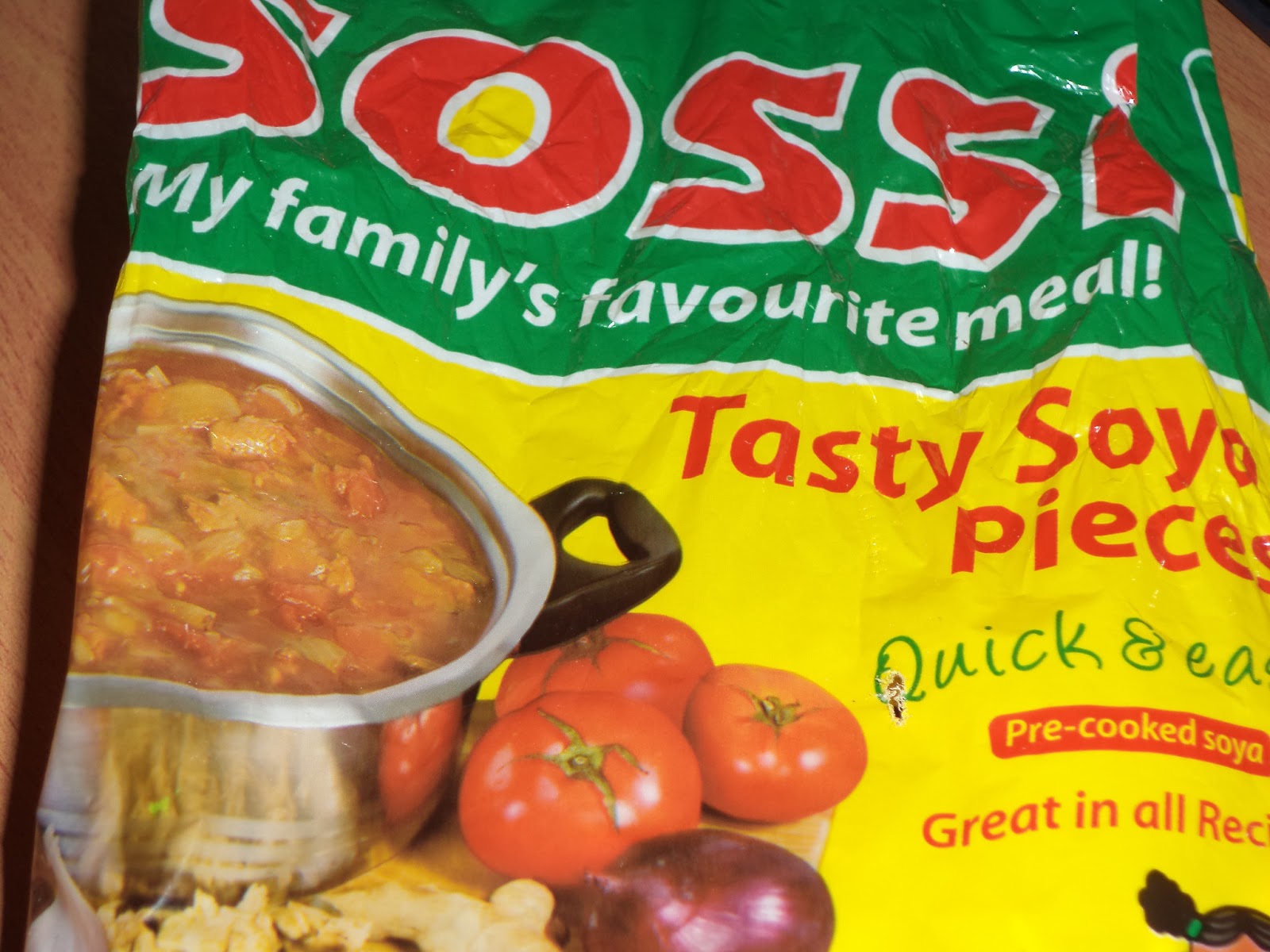How to Cook Sossi Soya Stew
 |
| Sossi soya pieces package |
 |
|
| Sossi soya stew |
With the Sossi brand, once the soya pieces are cooked, they resemble real pieces of beef. They can be served with rice, chapatis or ugali. Another brand is Proya produced by the same company. The Proya type is minced soya that once cooked resembles real minced meat.
For either type, the following is a simple recipe I use for cooking them.
Ingredients: (Serves 3)
- 1 cup soya pieces
- 1 onion
- 1 bell pepper
- 3 pieces garlic (crushed or finely chopped)
- 3 tomatoes
- 3 pieces of chopped okra
- Garam masala ( or coriander and cumin seeds powder) or Royco
- Salt
- Cooking oil
- Coriander/Dania (Optional)
- Water (2 cups)
Instructions:
- Heat oil in a sauce pan then saute the onions till slightly browned.
- Add chooped bell pepper and garlic then cook for about three minutes.
- Add the tomatoes and okra and cook for about three minutes. If you intend to use dania/coriander, add it now.
- Add the garam masala or royco and mix well.
- After a minute, add the soya pieces (or minced soya) and cook on low heat for about five minutes. This is to allow the soya pieces absorb the flavours of the other ingredients.
- Before the food starts sticking to the sauce pan, pour in the water. Add salt then cook for about 15-20 minutes.
- Serve.
When cooking the minced soya (Proya), use less water if all other ingredients remain the same. Remember that all spices must be added before the soya pieces and water because the soya will need to absorb the delicious flavours from them.


